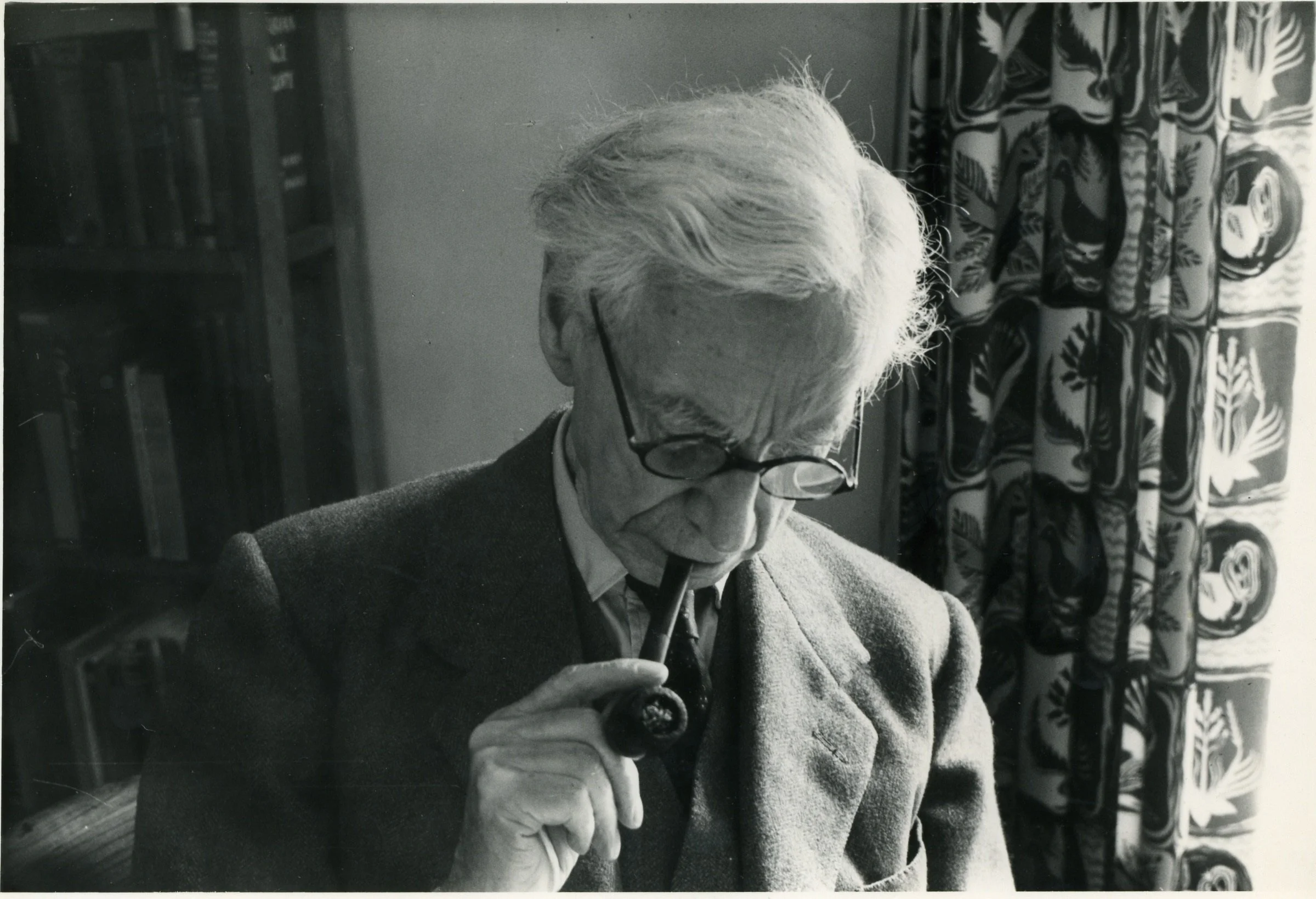Purpose: Make it a Nuanced Raison d’Etre, Not an Empty Buzzword
Defining your why is an important prerequisite for figuring out what comes next. It can be substantive and helpful - but should be done with care and nuance. Social science-based strategizing can help.
Hidden Theory - You’re always theorizing, but what if you’re not in control of it?
We are always theorizing! We have a theory for most of the things we encounter or are aware of in life. We use these theories to help us make sense of the world, to inform our decision making and importantly help us to predict future outcomes, attitudes and behaviours when a similar set of circumstances arises. Since we are conscious of our theories, we believe we shape the theories we carry, that we control them. But are we in control of our theories and the processes that develop these theories? Is there hidden theory we are not aware of, driving thoughts, actions and decision making? If we are not in control of our theorizing, this means that our sense making of the world, decision making and future predictions are inaccurate.
Want to Experience the Future? Travel to a $#^*hole Country.
We tend to think that the future is far out and that we need digital simulations and VR glasses to transport us into expected realities in order to experience them proactively.
In reality, versions of the future are already happening at the edges and you just need to be able to draw parallels between what is taking place in other contexts and translate that to your own.
Generational Market Research is a Scam
How much do members of the “Millennial generation”, “Gen Z”, or the next one – “Gen Alpha” – really have in common? Not much according to social scientific research. Most generational labels are spun around a fixed yet randomly composed cluster of birth cohorts spanning around 15 years – not collectively gained experiences or decisive historical events that might have socioculturally shaped people’s attitudes and practices during that time. In fact, the only thing they do share is that they don’t even exist as meaningful social entities. So why do market researchers and think tanks keep pushing arbitrary generational labels, while corporations are gladly investing their valuable marketing budgets in questionable customer segmentation on GenZ?
This article investigates how generational market research has slowly turned into a scam since the original inception of the “teenage consumer”. In the last decades, so-called experts have made it a lucrative business to proclaim generational differences, heralding the emergence of new birth cohorts-specific generations at faster and faster intervals. This business has conjured up an artificial generational warfare that mostly takes place in the click-hungry world of digital media.
Trends In a Time of Chaos
Trends are changes in sequential data gathered over time. Trend analysis is a very powerful tool, without which critically important initiatives such as the Intergovernmental Panel on Climate Change would not be possible. Properly used, trend analysis is extremely useful. Executed poorly, or used incorrectly, it can be little more than bullshit.
And here we go again!
It has been some time since we have been consistently publishing on our site. Mostly this is because we have been quite busy. We’ve been writing for our clients and have had very little time for ourselves. Although, it must be said that one of the things we do not do at HFS is spam LinkedIn and Facebook every time we are low on work. Instead, we focus on talking about things that interest us when there is something important to say. Consequently, we have not spent much time writing about our opinions regarding some of the smaller topics of the day. Until now….
Why Do People Anthropomorphize Everyday Objects?
Why do we choose to assign a gender to our car? Why do we apologize when we bump into a piece of furniture? Why do we yell at our computer when it struggles to work? Why do we give names to our toys? Though talking to inanimate objects may seem like symptoms of a deranged mind, these types of behaviours are practiced by nearly everyone. This is because of our innate human tendency for anthropomorphism: the ascription of humanlike characteristics, motivations, intentions, or emotions in nonhuman things (Grossman & Simon, 1969). While this tendency can be obvious in some cases (e.g., naming dolls, action figures), the human imagination extends anthropomorphism far beyond the humanlike. Ever notice that some cars look like they’re smiling? Do you get angry with your temperamental washing machine? Have you bumped into a store mannequin and promptly said “sorry”? Does your guitar seem free-spirited? These are all different forms of anthropomorphism.
We wanted to better understand this phenomenon, so we set out to explore why people anthropomorphize objects in their lives.
Image: Lenore Edman, Wikimedia Commons. https://commons.wikimedia.org/wiki/File:Googly_eye_on_a_hammer.jpg
Missing Fieldwork: Why “Virtual Ethnography” is Not Human-Centric
Virtual ethnography with its remote methods is incapable of fulfilling several methodological key qualities that allow qualitative researchers to gain a deep understanding of human behavior, everyday life, and how people experience the world. Keep reading if you are looking for arguments why we should return to fieldwork as soon as the global health situation allows it again.
Harnessing the Power of Ethnographic Photography in Commercial Research
Photography is an often-overlooked tool in commercial, human-centric research. Currently treated as a nice-to-have afterthought, it is, in fact, a fantastic vessel for providing deep ethnographic insights into the lives of people. Ethnographic photography therefore requires a higher degree of professionalization.
Dialogues About the Role of Foresight and Problems it Faces Today: Part 3
This article is the last of three dialogues between a few members of our foresight team, Mat Lincez, Karl Schroeder, Dr. Ashley Metz, and Dr. Paul Hartley. In this series of discussions, we talk about the place of foresight strategy, some problems that we see in the way foresight strategy is implemented, and what needs to happen for governments, companies, and NGOs to get more value out of the exercise.
Dialogues About the Role of Foresight and Problems it Faces Today: Part 2
This article is the second of three dialogues between a few members of our foresight team, Mat Lincez, Karl Schroeder, Dr. Ashley Metz, and Dr. Paul Hartley. In this series of discussions, we talk about the place of foresight strategy, some problems that we see in the way foresight strategy is implemented, and what needs to happen for governments, companies, and NGOs to get more value out of the exercise. In it we also discuss a few topics, like the current situation concerning the global pandemic, failures of foresight strategy in the communications process, and problems that arise when doing foresight well.
Don't Do It Wrong #2 - Automate with Caution: Learn from a History of Dehumanization
As a researcher in Human-Robot Interaction, a lecturer in digital transformation, and a historian of all things automated, I am constantly surprised by the consistent failure of organizations deploying automation. We keep thinking that the point of automation is the technology itself, but like all things in this world, what should really matter is how it helps people. But don’t worry… you can avoid this pitfall without even much difficulty, so long as you’re willing to do the work.
Building a Meaningful Car Sharing Service of the Future: Four Principles for Radical Human-Centric Design
At the Human Futures Studio, we believe it is time to take the next step and move beyond the status quo. In order to become a growing and sustainable business, we argue that a car sharing provider needs to embrace an entirely different perspective in the service development process.
Don't Do it Wrong #1 - Always Do Ethno Before Surveys
Ethnography and quantitative surveys are often thought of as polar opposites. Whilst it is true that they approach research in fundamentally different ways, we find that when they are used together they are powerful in generating accurate and effective insight and foresight for our clients. This is especially important with surveys. The purpose of this article is to help you design better and more effective surveys.
Dialogues About the Role of Foresight and Problems it Faces Today: Part 1
This article is the first of three dialogues between a few members of our foresight team, Mat Lincez, Karl Schroeder, Dr. Ashley Metz, and Dr. Paul Hartley. In this series of discussions, we talk about the place of foresight strategy in organizational work today, some problems that we see in the way foresight strategy is implemented, and what needs to happen for governments, companies, and NGOs to get more value out of the exercise. In it we also discuss a few topics, like the current situation concerning the global pandemic, failures of foresight strategy in the communications process, and problems that arise when doing foresight well.
Car Sharing of the Future: Unlocking a New World of Automotive Experiences Beyond the Commuter Paradigm
For a car sharing service to become truly desirable and establish a sustainable business, people need to see value which goes beyond just gaining access to another commuter mobility option. The current modus operandi, the commute, may in fact be preventing a more innovative approach coming into being.
We All Have a Quant Problem: Recognizing It and Identifying a Vendor to Fix It
It has become clear that in business research, we have a quant problem. We have many practitioners making bold promises and predictions that are not met. Skepticism is increasing and businesses are doubting the quality of the quantitative research that is presented to them. This is a problem.
Sharing and Caring: How Car Sharing Flourished Differently in Helsinki
This article is a case-study response to Daniel Mai’s article “Sharing without caring: How a lack of community undermines the principles of the sharing economy in the mobility space.” It discusses how the sharing economy in general, and car sharing, in particular, plays out differently in a more community-driven context like Helsinki.
The Good, the Bad, and the Singularity: Separating Foresight from Future Failure
You can’t waste time with just any old foresight because something that impacts company-wide strategy is extremely important, and potentially dangerous. You need good foresight to help you prepare for the next few years of your entire organization’s development. So, what is good foresight a how do you recognize it?
Sharing Without Caring: How a Lack of Community Undermines the Principles of the Sharing Economy in the Mobility Space
The car-sharing industry, as designed today, is far from being human-centric. While car sharing is certainly one of the futures for automobility, we argue that the key to a sustainable business model and a better experience lies in the crafting of community, the social institution of mutual responsibilities, and the emergence of accountability among users.




















